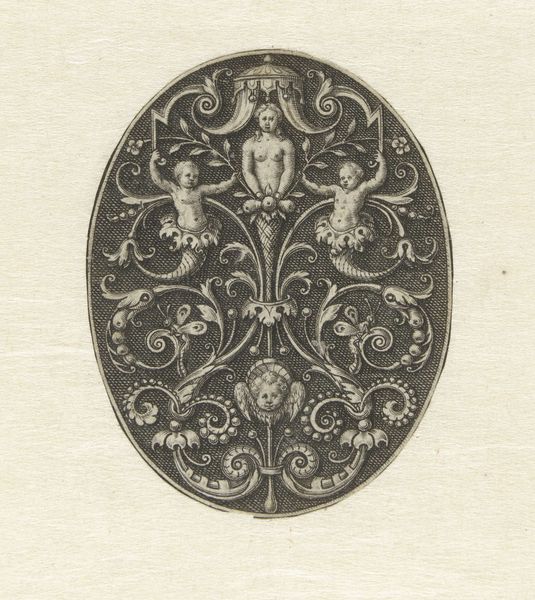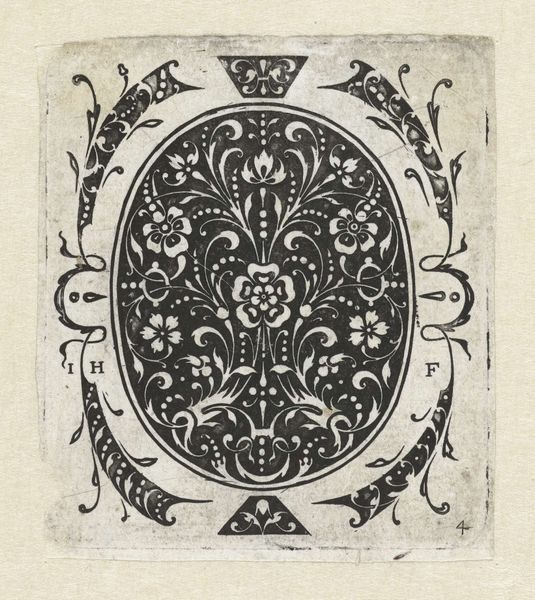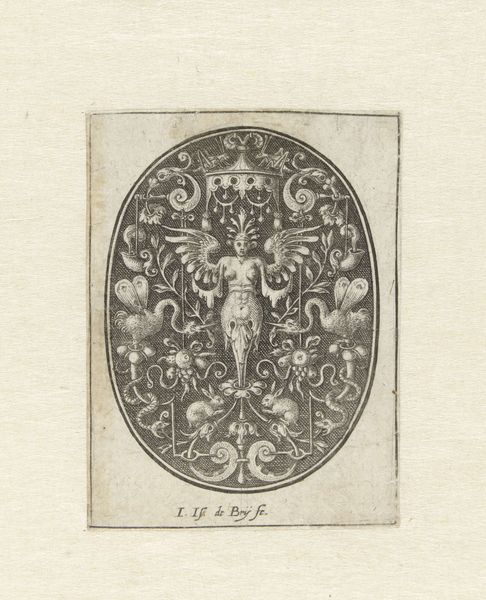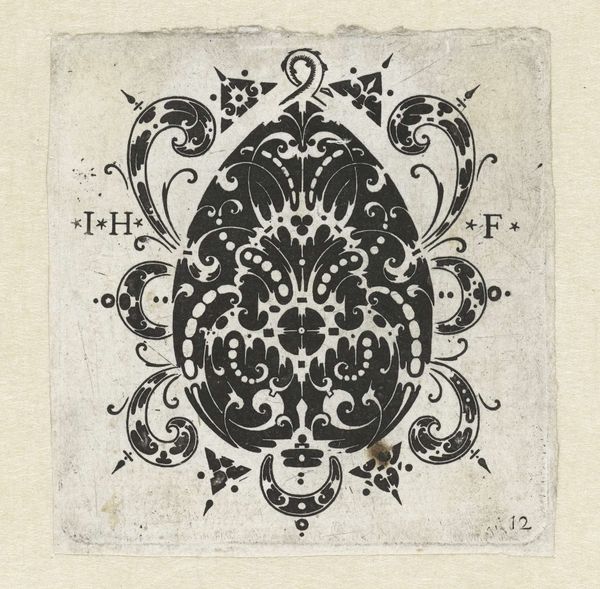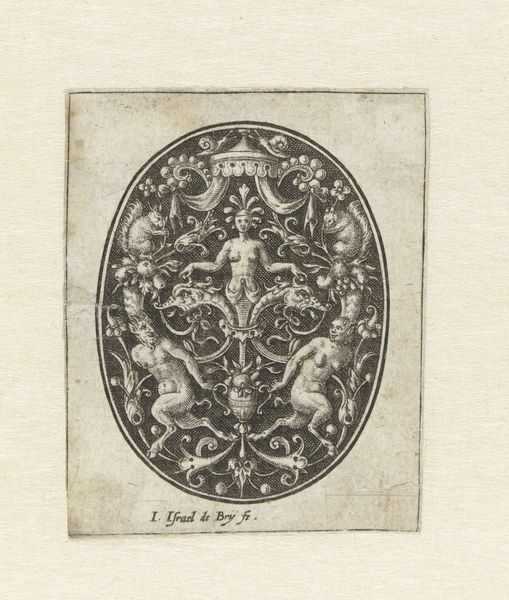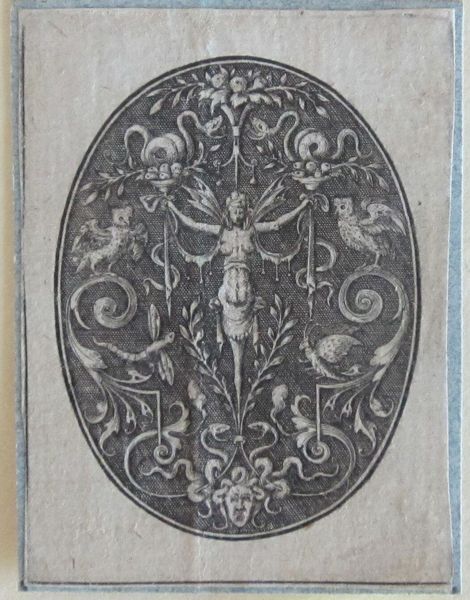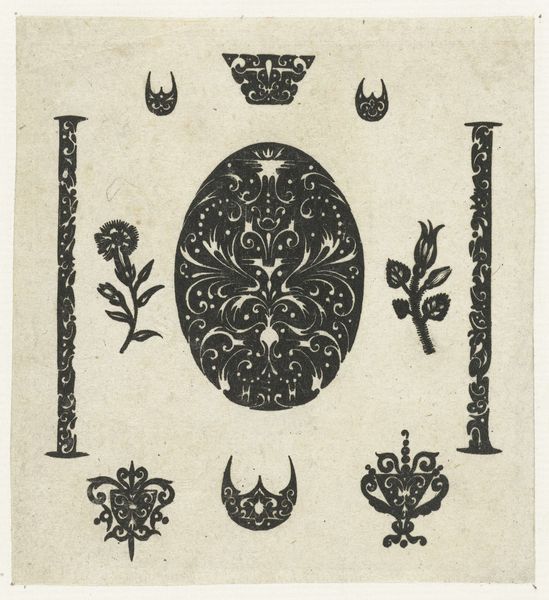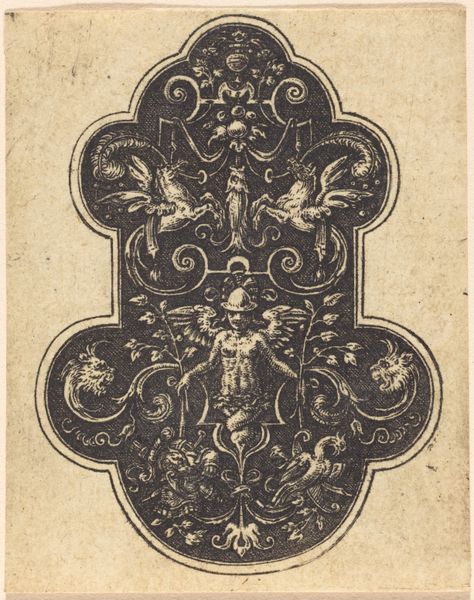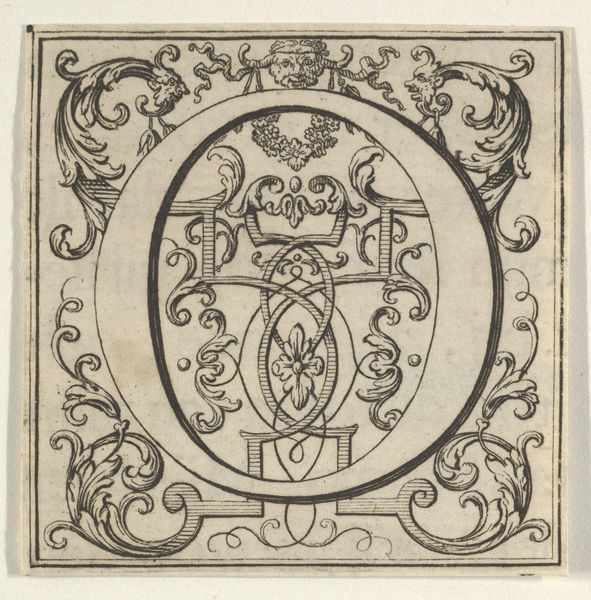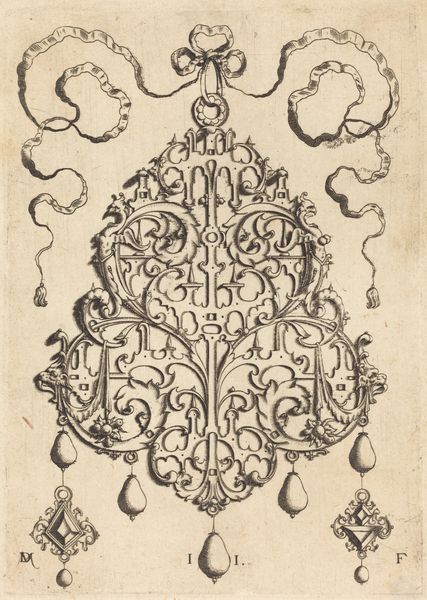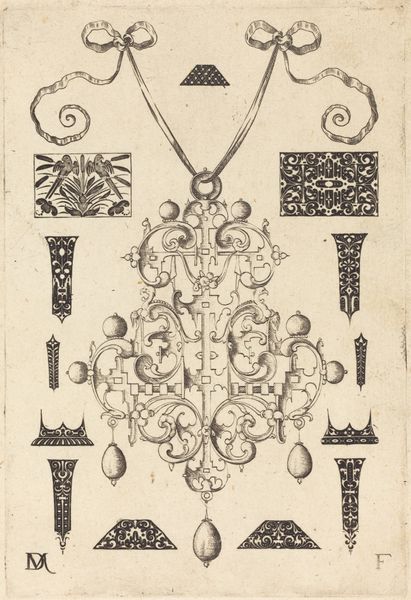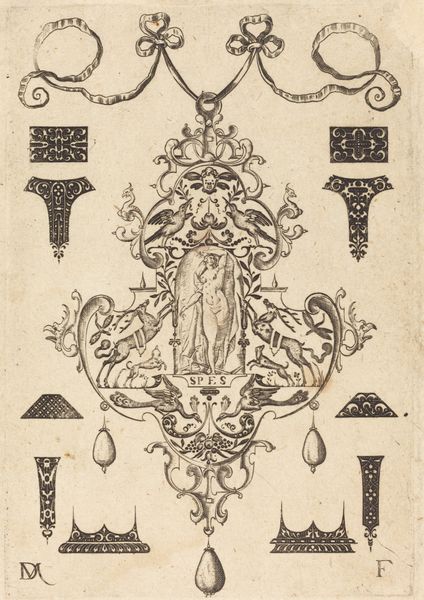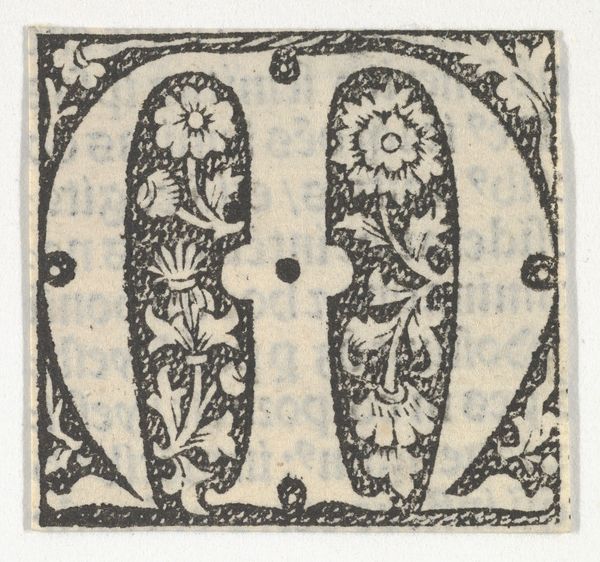
#
aged paper
#
toned paper
#
light pencil work
#
old engraving style
#
personal sketchbook
#
ink colored
#
pen and pencil
#
pen work
#
sketchbook drawing
#
sketchbook art
Dimensions: height 69 mm, width 53 mm
Copyright: Rijks Museum: Open Domain
Curator: Here we have "Ovaal met in het midden een vrouw met vleugels," or "Oval with a woman with wings in the center," an intriguing piece made somewhere between 1571 and 1623. The work is currently housed here at the Rijksmuseum. Johann Israel de Bry is credited as the artist, rendering the piece in pen and pencil. Editor: The initial impact is a bit...strange, yet elegant. A touch macabre, perhaps? It’s busy but symmetrical, grounded but also otherworldly, you know? Like a coat of arms for a gothic fairy. Curator: The use of such classical imagery – the oval frame, symmetrical composition – suggests a conscious borrowing from established visual traditions, specifically from the prints widely circulating then, disseminated as information. In those days, images shaped perceptions, reinforcing power and moral guidance. The winged figure might have been conceptualized as a divine messenger or personification of virtue or fate. Editor: Oh, absolutely! The owls perched on either side, those twisting serpents at the top. This definitely reads like allegory with an edge! There is also something incredibly delicate about the line work, especially around the winged woman. It gives her a spectral, almost fading quality. And the whole piece looks like it came straight out of a personal sketchbook. Curator: I see that. Such visual expressions also acted as didactic tools. Meaning they could illustrate moral, political, and spiritual messages within domestic spaces. It could well be that such work aimed to provoke discussions about good versus evil, human agency, or transcendent grace in households. Editor: Looking at it now, there’s also an incredible sense of drama, even a touch of dark humor. The contrast between the figure’s calm demeanor and the chaos surrounding her – you feel this is less about a simple moral lesson and more a glimpse into the artist’s imaginative inner world. Perhaps his way of commenting on, or coping with, the tumult of the times. Curator: I'd argue that the political elements of the 17th century and the function art fulfilled must be kept in mind to give the piece its correct importance. It’s really rewarding to uncover these social contexts behind these works. Editor: Absolutely, but ultimately, this work’s raw imaginative energy speaks to me in ways that no history book could. It is a haunting, darkly beautiful creation.
Comments
No comments
Be the first to comment and join the conversation on the ultimate creative platform.
